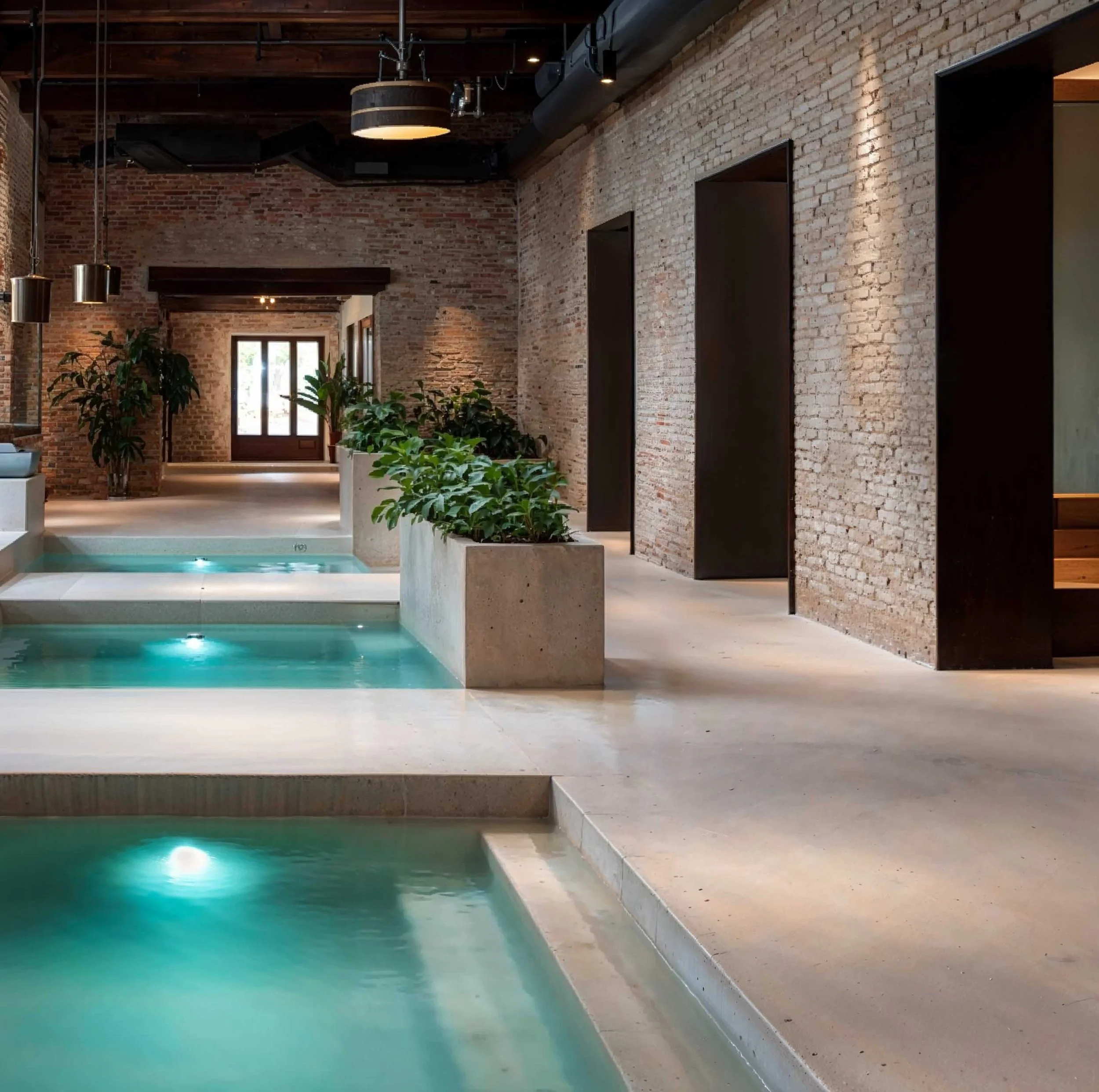From Ancient Baths to Modern Spas
The evolution of spas began with their function as public facilities for bathing. People in ancient Greece and Rome traveled to thermal springs to achieve cleanliness, support healing, and maintain social bonds. The Romans built bathhouses that combined hot, warm, and cold bathing spaces with areas for relaxation and socializing. After the Roman Empire collapsed, bathing practices continued in parts of the Middle East and Asia. In the 19th century, European spa towns revived the idea of mineral water and fresh air, which people believed would promote health.
What a Spa Means Today
Modern spas offer customers multiple treatment choices to meet individual needs. Some provide medical care through physical therapy and dermatological treatments. People practice wellness rituals through sauna sessions, steam baths, hydrotherapy, and massage. Hotels establish spas as peaceful retreats that welcome travelers seeking rest. Urban day spas provide quick services that fit the fast pace of city life. The core purpose remains the same, a place for water, heat, rest, and care to support physical and mental wellness.
Design Principles That Still Work
The entrance area should create a peaceful environment that welcomes all visitors. Circulation should lead guests from active zones to quiet areas. A temperature sequence that starts warm, moves to hot, then cool, and ends with rest helps increase blood circulation and relaxation.
Stone, tile, wood, and lime plasters resist moisture and age well. Non-slip flooring is essential, the experience requires soft daylight, warm artificial light, and strong acoustic control.
Air and water quality should be maintained through proper ventilation, low-VOC finishes, balanced humidity, filtration, and hygienic edge and drain details. People often associate sustainability with pleasant scents and calm music, but it goes much further.
Without basic discipline, spas can become resource-intensive. Good operations manage energy and water well. Conservation strategies include low-flow fixtures, greywater use for flushing and irrigation where allowed, leak detection, and right-sizing pools to cut heating loads. Heat recovery from exhaust air and equipment, well-insulated shells, tight doors at saunas and steam rooms, and smart setpoints reduce heat loss.
Recommended materials include durable tile and stone, FSC-certified wood, recycled-content backer boards, and low-VOC grouts and sealants. Policies should support towel reuse, fragrance-free areas for sensitive guests, green cleaning products, and scheduled system checks.
Access and Wellbeing
Spas should serve more than luxury seekers. Thoughtful design includes accessible routes, adjustable seating, visual and tactile cues, private changing areas, and quiet rooms that support neurodiverse needs. Community access, day passes, and off-peak pricing improve inclusivity.
Where Spas Are Headed
Smaller neighborhood spas with premium rooms often deliver better value than large facilities. Data-lite sensors that track humidity, temperature, and air quality improve comfort while lowering energy use. In cities, courtyards, planted roofs, and outdoor cold plunges can bring daylight, fresh air, and biodiversity into dense contexts. Evidence-based programs that support stress reduction, sleep, and physical therapy go beyond short-lived trends.
In Conclusion
The first spas were simple places for bathing and recovery. The most effective contemporary designs keep that clarity, use long-lasting materials, control light, sound, air, and water precisely, and operate within a strict sustainability framework. Done well, these facilities meet user needs while maintaining high quality throughout their life cycle

